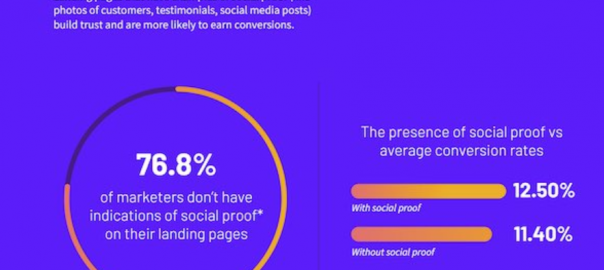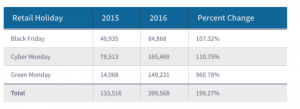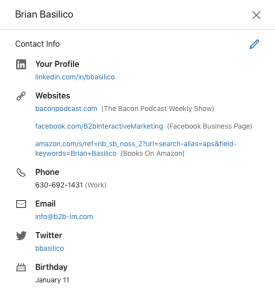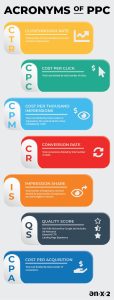Designing for Conversion—The Power of a Good Landing Page
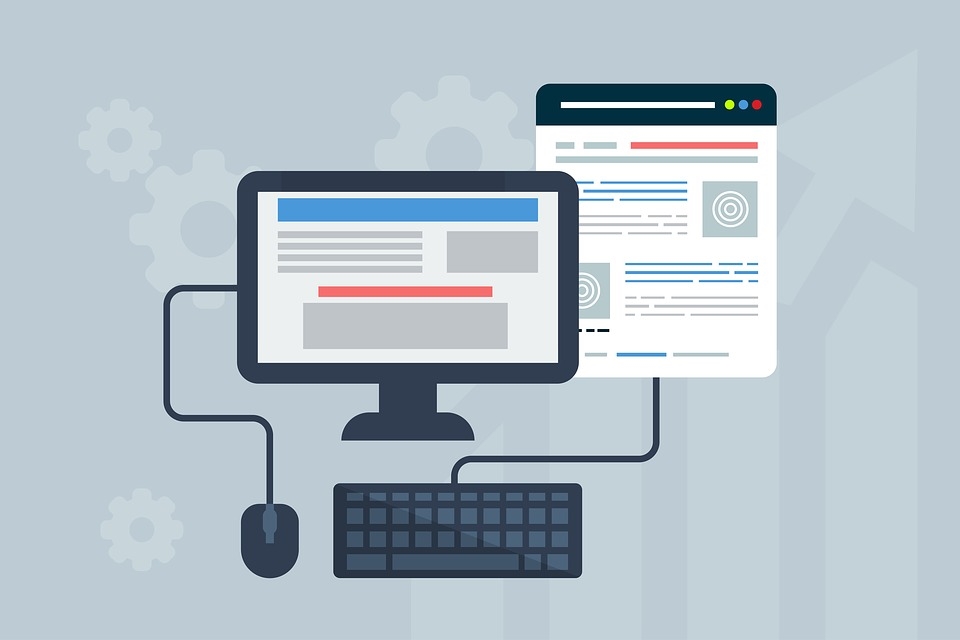
Within the framework of digital marketing, conversion centered design (CCD) is a term applied to the practice of designing a web page with the goal of motivating visitors to take a specific action. CCD is focused on increasing conversions by using various triggers and design elements that guide visitors to completing this action.
The action itself varies depending on the business goal you’re trying to achieve and spans a wide range of different actions including: sales, registrations, newsletter signups, app downloads, and more.
Leveraging landing pages
Landing pages are at the heart of conversion centered design. They enable marketers to focus a given page on a specific message or goal which matches the ad (or content) that referred the visitor the page in the first place.
Even so, nearly 80% of landing pages are home pages and only about half of landing pages are mobile-optimized.
When done well, a highly targeted landing page can increase your conversion rate by up to 300% and if that doesn’t convince you, consider that the more landing pages you have, the more likely your campaigns are to convert. Marketers who use an average of 10-15 landing pages in their campaigns can increase their leads by 55%.
How to create a high converting landing page
Link sparingly—Landing pages should be designed around a single goal with minimal distraction. This is one of the key building blocks of a successful landing page. Unbounce, a landing page hosting provider, reports that pages with a single link convert at a rate 30% higher than pages with 5 or more links (13.5% versus 10.5%).
This webpage from an accounts payable vendor is a good example of a focused landing page that contains a single action (a case study download requiring visitors enter their contact information).
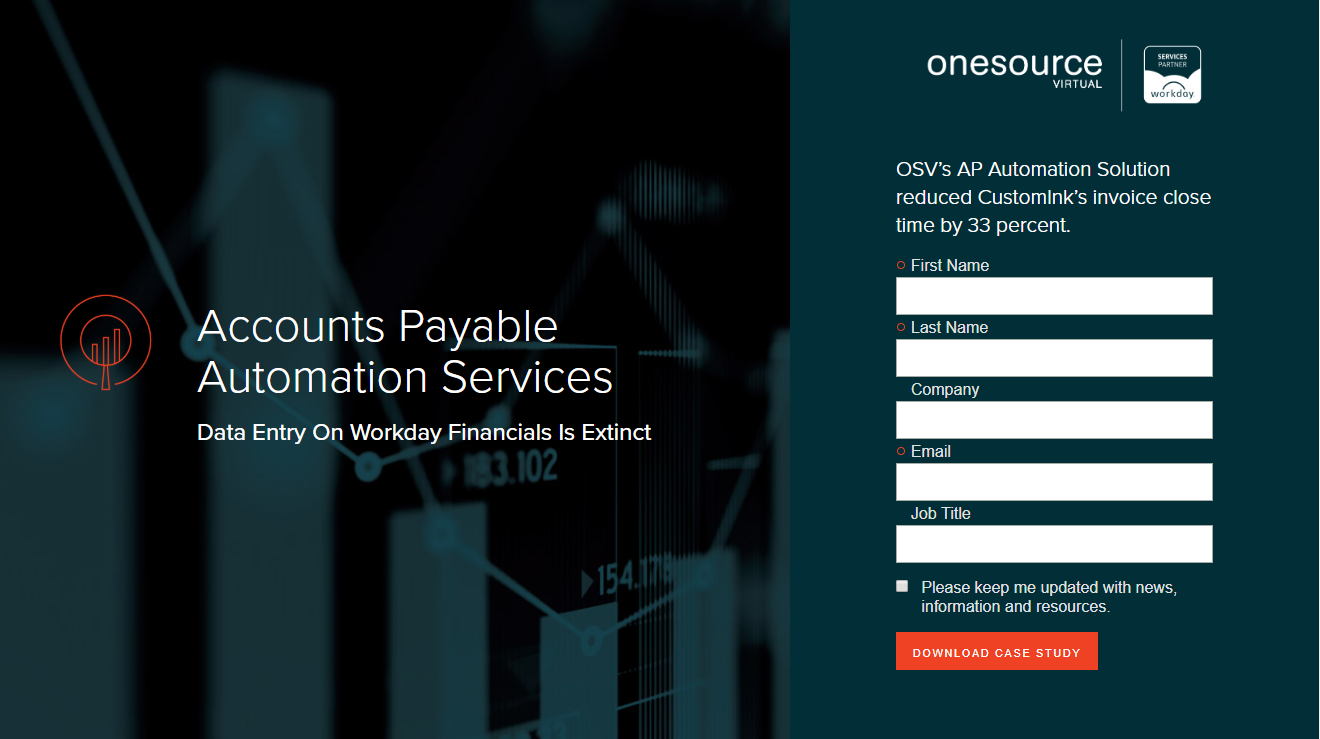
Establish trust—An effective landing page should communicate that you are a trustworthy, legitimate business that doesn’t plan to misuse a visitor’s personal information. To this end, including a link to a privacy policy in the footer of the page is an important ingredient to any landing page (and a necessary one if you’re running Google Ads). Another way to establish trust is by incorporating social proof into the design of your page (customer testimonials, reviews, staff or customer photos and awards or seals are some examples).
MarketingProfs reports that nearly 80% of marketers don’t incorporate elements of social proof on their landing pages, but the presence of social proof can increase conversion rate by 10%.
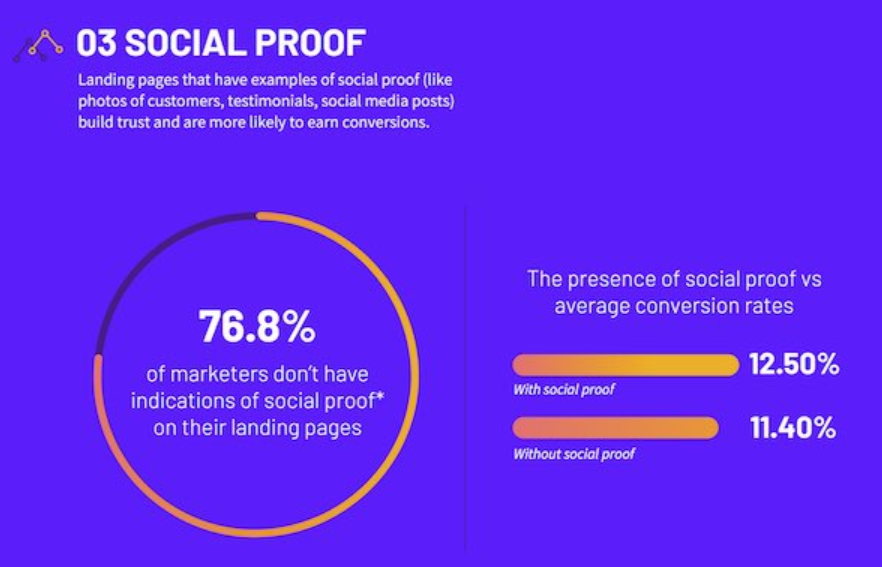
Image Source: MarketingProfs
Use video—According to a study by EyeView, using videos on your landing page can increase conversion by up to 80%. Unbounce recommends using video on landing pages whenever possible. It increases the length of time people spend on your page and provides a focal point for your message.
Make sure your pages are mobile friendly—In today’s highly mobile environment, speed counts. If a page takes longer than 3 seconds to load, about 50% of visitors will leave it. Page speed also impacts organic search engine ranking as well as quality score (for Google Ads advertisers). Improving your landing page experience so that it is mobile friendly is one of the best ways to improve your conversion rate.
Not convinced? Consider that 46% of people say that waiting for a page to load is what they dislike the most about mobile web browsing and that a delay of just .1 seconds can cause a 7% drop in conversion rates.
Test landing pages regularly—The majority of companies (61%) use 5 or fewer landing pages in their campaigns. Additionally, only about 52% of companies that use landing pages test them to see what’s working. Testing is important because best practices and statistics don’t apply to every scenario, company, or goal.
For example, you might assume that a short landing page such as the example above will convert better than a longer page. However, Wordstream reports that long landing pages can generate up to 220% more leads than pages with above-the-fold CTAs. Testing can help advertisers understand what type of page works best for them, and is an important component of a comprehensive lead generation strategy.
Putting it all together
Designing for conversion involves more than creating an attractive page using compelling graphics. Many things need to be considered when creating and implementing high-converting pages, not the least of which is to incorporate landing pages into your campaigns in the first place.
Pages that convert well should also be highly relevant (contextually) to whatever source referred a visitor to a given page. That’s why companies that use 10-15 pages see higher conversion rates than those with 5 or fewer pages. The more products, services, customer types, or topics you’re addressing with your campaigns, the more pages you will need to create.
As with any initiative, testing your designs and optimizing each page based on actual performance should be baked into your overall strategy. Taking the time to do this will help improve conversion rate and turn more of your hard-won traffic into leads, sales and customers.

Ryan Gould
Vice President of Strategy and Marketing Services
Elevation Marketing
From legacy Fortune 100 institutions to inventive start-ups, Ryan brings extensive experience with a wide range of B2B clients. He skillfully architects and manages the delivery of integrated marketing programs, and believes strongly in strategy, not just tactics, that effectively align sales and marketing teams within organizations
LinkedIn: https://www.linkedin.com/in/rygould/
(68)
